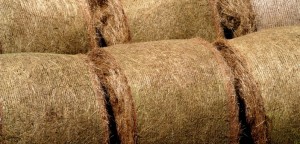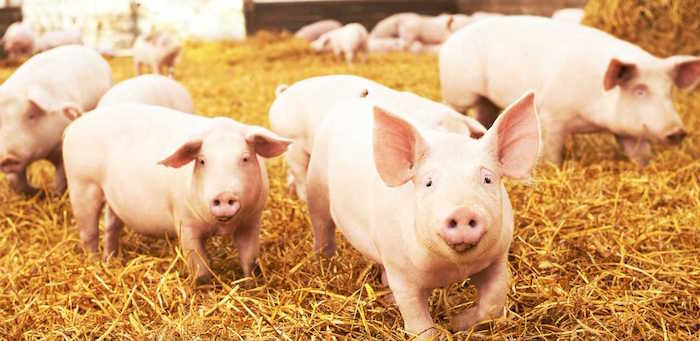Producers visiting the British Pig and Poultry Fair have warned that the UK’s staunch commitment to high-welfare, straw-based pork production could actually hinder profit potential going forward.
Prices are hitting more than £100 a tonne in most regions, with short supplies and rapidly rising demand for this ‘golden’ commodity both in and out of agriculture.
Talking to farmers during the event, most confirmed that escalating straw prices were beginning to hit margins. They are ‘praying’ for an early, fair-weather harvest to replenish stocks and hopefully pull prices back to more realistic levels.
However, many producers – particularly those in East Anglia where production is expanding predominantly in the outbred/straw-reared sector – are concerned that the current situation is now revealing tangible vulnerabilities the pig sector had not factored within its high-health, high welfare-focused manifesto.
Although pig prices remain firm and the outlook is favourable, the increasing demand for straw from the energy sector and other livestock industries is proving a serious threat and one that’s unlikely to go away.
One Suffolk farmer said the inflated prices now being charged for straw could make the pig job unsustainable. He was currently paying between £90 and £95 a tonne for ‘variable quality’ bedding for his breed to finish operation. Others confirmed that supplies in the East of England were ‘drying up’ and those left were mostly substandard. Managers and stockmen are understandably anxious about the impact this might have on pig health and their antibiotic reduction targets, going forward.
Some large-scale pig businesses are now sourcing straw from the Midlands, Cheshire and the west coast with costs reported to be a £150 a tonne or more in some cases, which cannot be sustained. Others say many long-standing ‘straw for muck deals’ are now foundering as cereal producers are beginning to tender stocks to the highest bidder.
Many arable farms are also taking advantage of premium prices now being offered for straw by bio-energy firms. It’s a lucrative way to add value to feed grains and bolster revenues in what’s been a rather a static market for more than a year.
Mix and match
 Views on straw from potential new entrants and producers considering re-investment/expansion on the finishing side were mixed. With health and antibiotic reduction now flagged as the industry’s top priority, many felt environmentally controlled housing would offer better opportunities to curtail disease, stabilise input costs and push for efficiency.
Views on straw from potential new entrants and producers considering re-investment/expansion on the finishing side were mixed. With health and antibiotic reduction now flagged as the industry’s top priority, many felt environmentally controlled housing would offer better opportunities to curtail disease, stabilise input costs and push for efficiency.
However, the direct association consumers have between straw-based production and high-welfare definitely could not be discounted. Producers I talked to said they’d like to see more innovation in grower and finishing accommodation, in areas that might ‘bridge the gap’ between slatted and bedded production. If straw prices remain high, pig farmers will certainly have to become more frugal with bedding materials, while industry will need to rethink how it might market such changes to welfare conscious consumers.
Danish lessons?
The Danish industry has been exploring part bedded/part slatted environmentally controlled housing for some time and there are lessons to be learned. During a recent visit to Denmark, British producers gained first-hand experience of these ‘halfway houses’ which give pigs access to straw at all times within a high-performance, fully automated and monitored production setting. These systems satisfy discerning retail/consumer requirements but need very little additional labour to manage.
They’re also accredited within DKs Three Hearts Welfare assurance standard and are proving efficient, cost effective and consumers seem to appreciate the benefits they offer pig health/welfare and their wallets.




